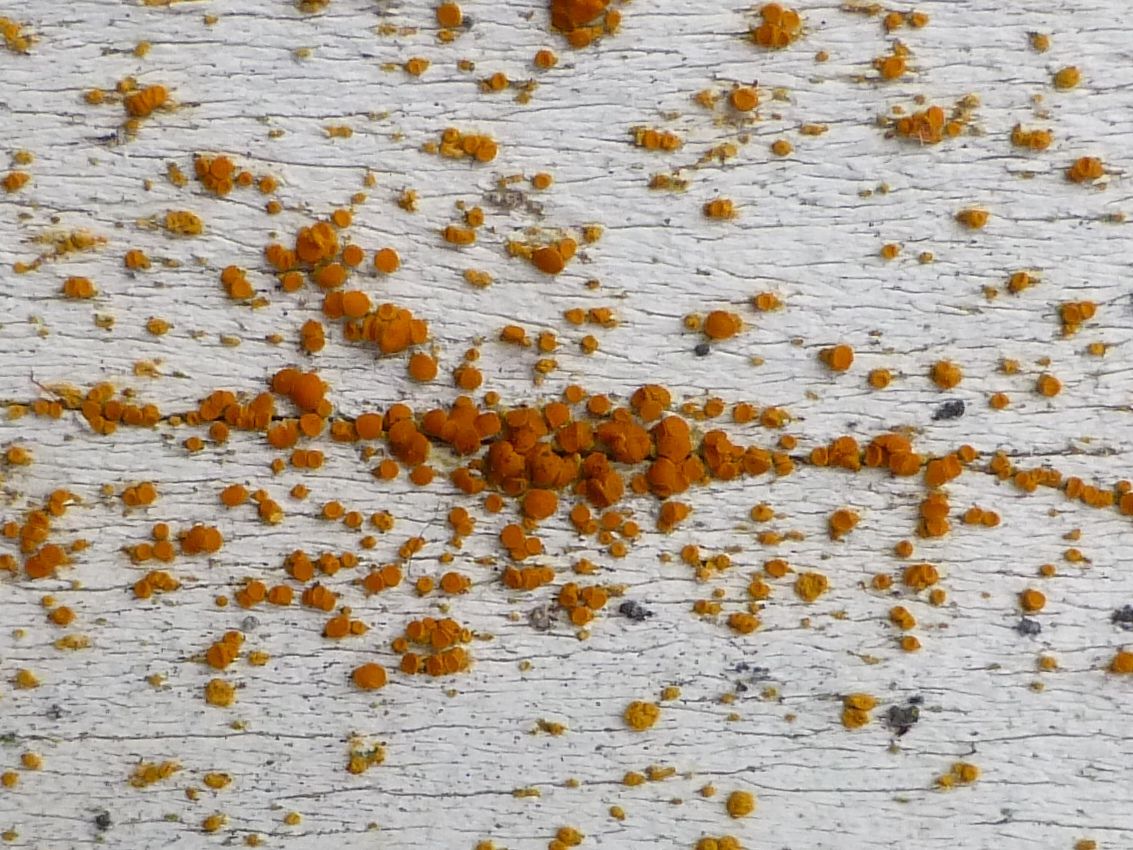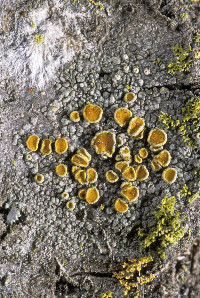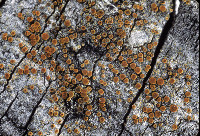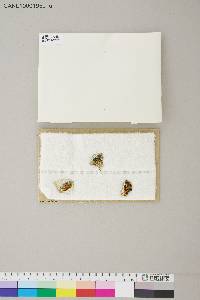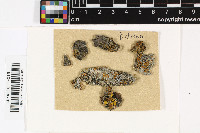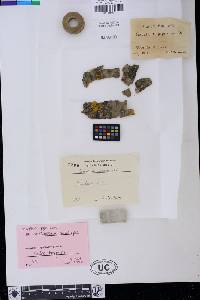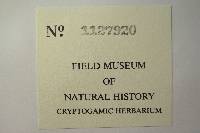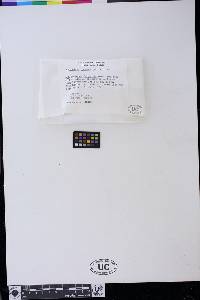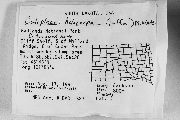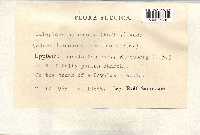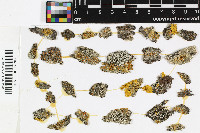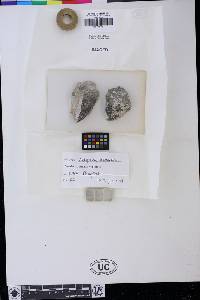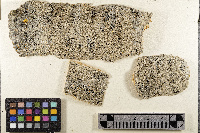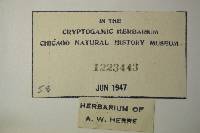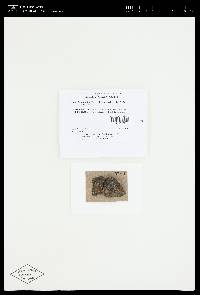
Consortium of Lichen Herbaria
- building a Global Consortium of Bryophytes and Lichens as keystones of cryptobiotic communities -
- Home
- Search
- Images
- Species Checklists
- US States: O-Z >
- US National Parks
- Central America
- South America
- US National Parks
- Southern Subpolar Region
|
|
|
|
Family: Teloschistaceae
[Biatora luteoalba var. holocarpa (Hoffm.) Steud. & Hochst., moreBlastenia luteoalba var. holocarpa (Hoffm.) Müll. Arg., Callopisma aurantiacum var. holocarpum (Hoffm.) A. Massal., Callopisma holocarpum (Hoffm.) Müll. Arg., Callopisma luteoalbum var. holocarpum (Hoffm.) Mudd, Callopisma pyraceum f. holocarpum (Hoffm.) Arnold, Caloplaca alcarum Poelt, Caloplaca balatonica Szatala, Caloplaca cerina var. holocarpa (Hoffm.) H. Olivier, Caloplaca holocarpa (Hoffm. ex Ach.) M. Wade, Caloplaca holocarpa var. holocarpa (Hoffm.) A.E. Wade, Caloplaca holocarpa var. vitellinaria (Szatala) Clauzade & Cl. Roux, Caloplaca pyracea f. holocarpa (Ehrh.) Oxner, Caloplaca pyracea var. holocarpa (Ehrh.) Th. Fr., Caloplaca vitellinaria Szatala, Gasparrinia alcarum (Poelt) Oxner nom. inval., Lecanora cerina f. holocarpa (Hoffm.) Nyl., Lecanora cerina var. holocarpa (Hoffm.) Nyl., Lecanora holocarpa (Hoffm.) Nyl., Lecanora pyracea f. holocarpa (Hoffm.) Harm., Lecanora vitellina var. holocarpa (Hoffm.) Link, Lecidea aurantiaca var. holocarpa (Hoffm.) Hepp, Lecidea holocarpa (Ehrh.) Röhl., Lecidea luteoalba var. holocarpa (Hoffm.) Ach., Lichen holocarpus Ehrh., Parmelia luteoalba var. holocarpa (Hoffm.) Bosch, Parmelia vitellina f. holocarpa (Hoffm.) Fr., Parmelia vitellina var. holocarpa (Hoffm.) Ach., Patellaria holocarpa (Ehrh.) Wallr., Placodium aurantiacum var. holocarpum (Hoffm.) Anzi, Placodium cerinum var. holocarpa (Hoffm.) Vain., Placodium pyraceum var. holocarpum (Hoffm.) Anzi, Verrucaria holocarpa Hoffm., Zeora vitellina var. holocarpa (Hoffm.) Flot.] |
Life habit: lichenized (mutualistic with algal photobionts) | lichenicolous (in/on lichens) thallus: crustose (crustaceous) episubstratal unspecified | placodioid-crustose, placodioid-foliose thallus: compartimentized areolate, squamulate [th] upper surface: yellow(ish) (if dull: buff) | red(dish) yellow (orange, orange yellow) [th upper surface]: epruinose [th marginal and upper surface] specific structures: absent [th] morphol substructures (eg areoles, lobes, branches) width [mm]: (low) 0.05 (high) 0.2 [th] morphol substructures (eg areoles, squamules): discontiguous, dispersed (throughout the thallus) | distantly discontiguous [th] morphol substructures (eg areoles, lobes, branches) upper surface: verrucose, warted | bullate [th] lower surface: yellow(ish) (if dull: buff) [th lower surface] specific structures: absent ascomata: absent | present ascoma: apothecial, apothecioid hymenial ascoma [mm]: (low) 0.3 (high) 1.0 ascoma: sessile, superficial | subpedicellate, substipitate, subpedunculate, substalked | pedicellate, stipitate, pedunculate, stalked [ascm, if apoth] disc, mazaedium: concave | plane, flat, flattened, expanded | subconvex, slightly convex [ascm, if apoth] disc, mazaedium: red(dish) yellow (orange, orange yellow) [ascm, if apoth] disc, mazaedium: epruinose [ascm, if apoth] margin surface; [if perith] periostiolar area, ostiole, involucrellum: red(dish) yellow (orange, orange yellow) [ascm, if apoth] margin excipular photobionts: absent | present | sparse [ascm, if apoth] subhymenial layers, hypothecium; [if perith] basal excipulum: hyaline, colourless [ascm] paraphyses/-oids: present [ascm] paraphyses/-oid cells width [µm]: (low) 2.0 (high) 3.0 [ascm] paraphyses/-oid apical cells width [µm]: (low) 3.0 (high) 6.0 [ascm] epihymenium, epithecium: brown(ish) yellow (ochraceous, ochre) asci: lecanoralean [asc] tholus: thickened [asc] tholus amyloidity (iodine reaction): present [asc] tholus amyloidity pattern: entirely amyloid (= Catillaria-, Teloschistes-types etc) ascospores: (median) 8.0 [asp] shape: ellipsoidal [asp] length [µm]: (low) 11.0 (high) 15.0 [asp] width [µm]: (low) 5.0 (high) 7.5 [asp] septa: absent | present spore lumen bilocular, polarilocular, plurilocular [asp] septa: transversely septate [asp] transversal septa: (median) 1.0 [asp] pigmentation: hyaline, colourless [asp] perispore, epispore: not apparent primary photobiont: present secondary photobionts (eg in cephalodia): absent primary photobiont: chlorophytaceous trebouxiaceous, chlorococcoid. substrate: wood dead, living | rock siliceous, siliciferous, acidic | rock, stones, pebbles unspecified. Thompson, J., 1997. American Arctic Lichens: The Microlichens. Thallus thin, grayish or blackish, granu-lose to disappearing; sometimes with thin whitish hypothallus, K—. Apothecia small, to 0.8 mm broad; margin of same color as thallus, soon disappearing; proper exciple of same color as disk or slightly paler; disk concave to flat and then convex; hypothecium hyaline or yellowish, with oil globules; epihymenium yellow or greenish yellow, granulose, K+ purple; hymenium 60-90 µm, hyaline; paraphyses simple or branching above, tips capitate, 3-5 µm; spores ellipsoid or ovate, polarilocular, 10-16 X 5-8 µm, septum 3-5 µm. This species grows on the bark of woody plants, old wood, and occasionally on rocks. It is temperate to arctic-boreal, in western North America, ranging south to California and Arizona. Hansen, Poelt, & S0chting (1987) have treated material of this same sort from Greenland on wood as C. pyracea, stating that it did not appear sensible to them to use the name C. holocarpa, which in their opinion was a temperate zone bark- and wood-inhabiting species. In North America, as the map shows, however, there seems no real hiatus between the temperate and arctic ranges. More study of the C. pyracea group seems needed. |
|
|
|
Powered by Symbiota

